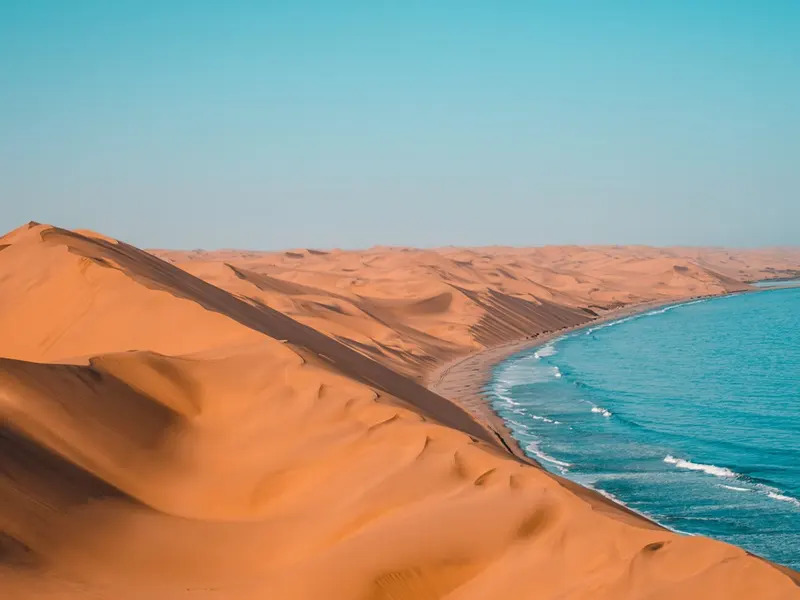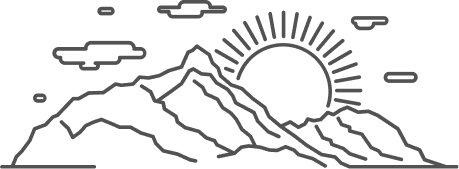Namibia

Language → English
Population (around)→ 2,619,956
Currency → Namibian Dollar (NAD) $
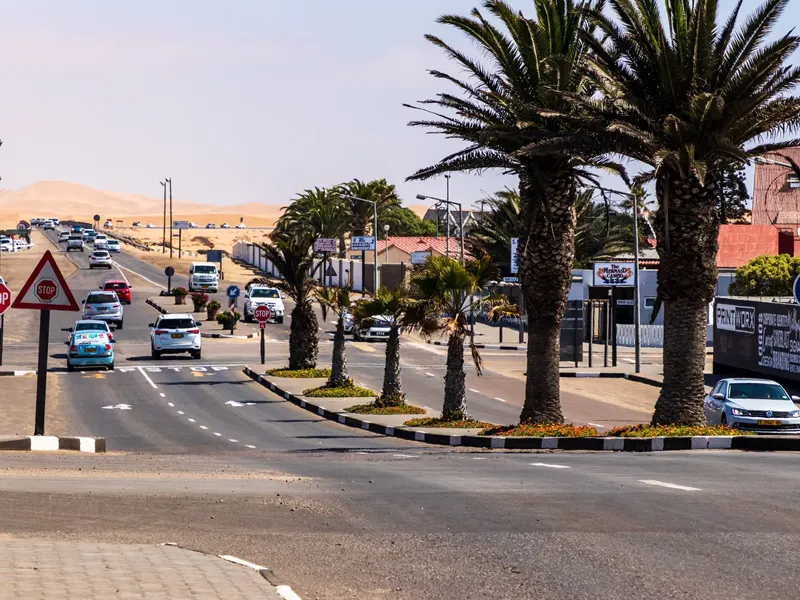
General weather Overview
Namibia has a tropical climate. The difference in daylight hours, as
well as the temperature differences between summer and winter, is minimal. The climate is
typically semi-arid, with scorching days and cool evenings. For the bulk of the year, the cold
Benguela Current keeps the coast pleasant and rain-free. Namibia boasts sunlight all year, with
just about a month of rain spaced out. In the middle of July, temperatures may hit an all-time
high. Winter days are warm, but morning temperatures can drop below freezing.
Cities
Windhoek / Capital – Rundu – Walvis Bay – Oshakati – Swakopmund – Katima Mulilo –
Grootfontein – Rehoboth – Otjiwarongo – Okahandja – Gobabis – Keetmanshoop – Lüderitz –
Mariental – Tsumeb – Khorixas – Omaruru – Bethanie – Ongwediva – Usakos – Oranjemund –
Outjo – Opuwo – Omuthiya – Outapi
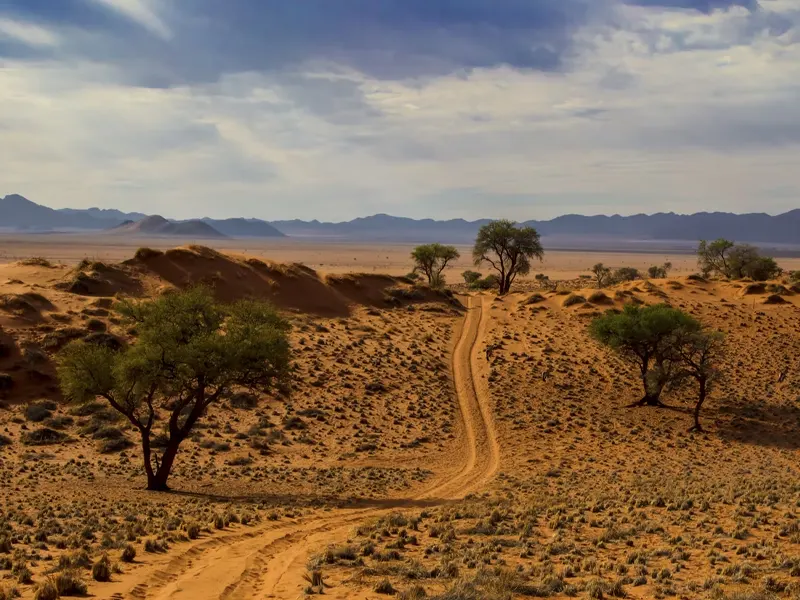
Fun facts
- Cape Cross is a small headland in the South Atlantic on the Skeleton Coast in western Namibia. It is home to one of the largest colonies of Cape fur seals in the world. The area has been declared a sanctuary to protect the largest and best known of the 23 colonies of fur seals that breed along the coasts of South Africa and Namibia
- The Namib Desert is home to some of the largest sand dunes in the world. These towering sand mountains are amazing and great fun to climb/explore. Dune 7 reaches a height of 383 m and is the highest sand dune in the country. However, the most popular place to see some amazing giant dunes is Sossusvlei. Located in the southern part of the Namib Desert, a vast area of salt and clay surrounded by some of the highest sand dunes in the world
- The Fish River Canyon is the largest canyon in Africa and one of Namibia's many natural wonders. The canyon has a total length of 160 km, a maximum width of 27 km, and a maximum depth of almost 550 m. It is the second in size after the Grand Canyon
Some popular local foods
Potjiekos, Omagungu, Biltong, Oshithima (Maize or Mahangu Pap),
Oodhingu, Omboga, Potjiekos, Kapana, Oshigali, Fat Cakes, Owawa
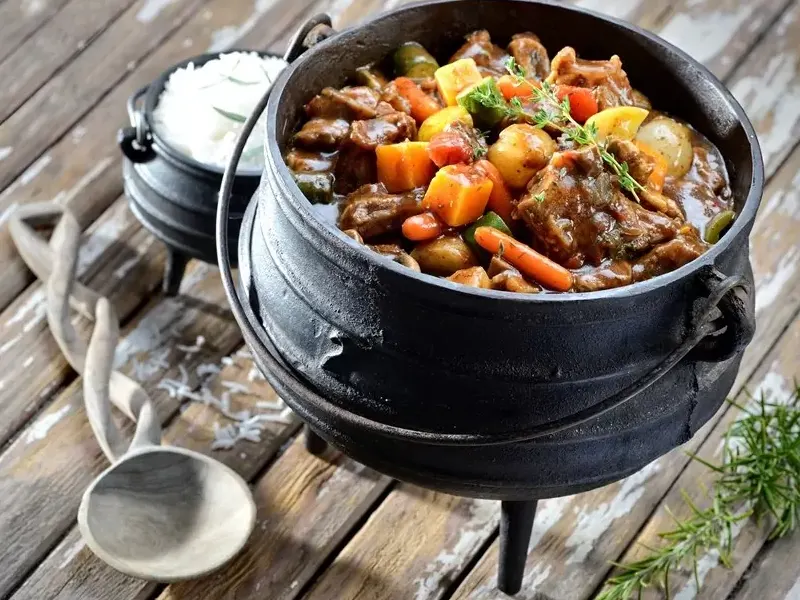
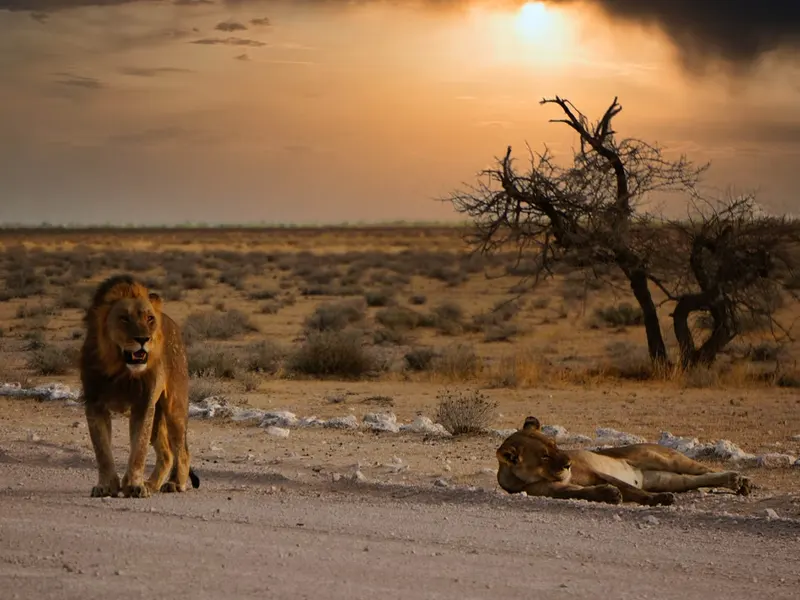
Some native animals:
Lions, Elephants, Giraffes, Hippopotamus, Cheetas, Black and white
rhinos, Wildebeest, Hyenas, Vultures, Black-backed jackals, Ostriches, Zebras, Seals, Dikdiks,
Baboons, Oryx
Couple of reasons to visit
- Namibia's diverse terrain and landscape forms the perfect backdrop and platform for many exciting outdoor activities. The most common activities include adventure sports such as hiking, sandboarding or ultramarathons in the Fish River Canyon, along with other water sports from windsurfing to kayaking; you can also experience horseback safaris and stargazing
- Namibia is one of the best places in the world for some world-class stargazing due to its low air pollution, cloudless skies, and non-existent light pollution. Many lodges have astronomy-related activities, including an on-site observatory
- Meet Namibia’s most iconic semi-nomadic Himba Tribe, recognized for their beauty, jewelry, plaited hair, and deep red stained skin color. You get to interact with San Bushmen, whose paintings are found in Kaokoveld and Damaraland
- Taking Flying Tours with a small local plane or hot air balloon. Capture changing landscapes of the Skeleton Coast from the air. Fly at low levels to take in all the stunning landscapes, rivers, and dunes, including littered whalebones to shipwrecks to remains of unlucky explorers, the Skeleton Coast is a graveyard of many
